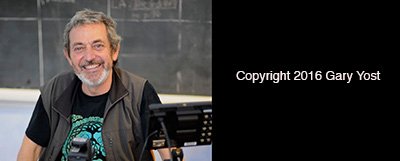A behind-the-scenes look at my creative process (video)
Sometimes what ends up on the cutting room floor is just as interesting as what goes into the final video.
On Thursday I shared with y'all how I made the first underwater, time-lapse, infrared music video. Today you'll get to see some of the fascinating tests and outtakes that went into conceptualizing the video but never made it to the final piece.
This video started out as a test to see how different clothing material would look in infrared. It's a crazy thing that sometimes black will show on infrared as white, and sometimes light colors will show as pure black. We were also testing how skin looked with different wavelengths of infrared light. For the first set of shots we were using a 720 nanometer filter and were amazed at how beautifully porcelain-y it make Lilie's skin look. (You're looking straight through the outer layer of dermis into the sub-dermis in this sequences.) The time-lapse tests were shot at 650 nanometers, which still include a tiny amount of color which provided for some interesting post-production color manipulations. It was also important to see how the infrared imagery looked in both the real-time and time-lapse motion domains. We were thrilled at the disjointed stop-motion quality of the time-lapse footage and our tests gave us the confidence we needed to start brainstorming the piece. There are some beautiful shots in this test.
It’s always a challenge to establish a distinct look for a project. For this video we had so much interesting visual imagery to work with and we originally felt that maybe we should “gild the lily” and add additional visual effects to the synchronized swimming sequences. One of the amazing things about shooting swimmers wearing white bathing suits in a pool with an infrared camera is that the video stream is also essentially a z-depth map in addition to an RGB image. When the swimmers are at the surface, the whitest part of the image is closest to the camera, and the darkest part is farthest away. This is insanely useful for doing depth-map-based visual effects, and we ran some fascinating experiments on the footage in After Effects to see what was possible. Short answer is, A LOT. But in the end we decided that the look of this piece needed to be as clean as possible, without pushing too far into the abstract zone. That said, we’ve got a lot of beautiful footage here and I’m hoping to eventually get the time to cut a piece for the Aqualilies that’s the visual equivalent of a synchronized swimming acid trip. Here’s a clip with some of our depth-map experiments:
And finally, when we were done with the swimming-pool shoot, Lilie was a sport and got into the outdoor shower and I shot her fascinating face with my iPhone at 240fps. Put an audio track by Antony and the Johnson's behind it and the piece is truly captivating.

I have a long history of inventing tools for animators and also making films and photographs. My wife, daughter and I live at the foot of beautiful Mt. Tamalpais on the San Francisco Bay and I've been using technology to tell complex stories for a long time. My biggest claim to fame? Leading the team that created Autodesk 3ds Max... the most popular 3D animation tool of all time. When I sold the Yost Group to Autodesk at the end of the last century I jumped headfirst into pursing my original love... photography and filmmaking. Now I spend all of my time exploring the mysteries of my world with my cameras, and revealing what I find in my images and films.